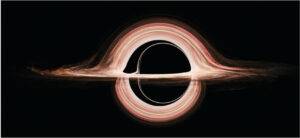The 21-cm spectral line is a powerful tracer of neutral gas in the early Universe and will provide novel measurements of the Epoch of Reionisation (EoR). Measurements of this line in absorption against individual, bright, distant radio sources can provide measurements of distribution of the neutral hydrogen gas both in-situ and along the line of sight. These numerous absorption lines are referred to as the `21-cm forest’. With powerful radio sources now being found up to and within the EoR, such observations have become feasible with the Square Kilometre Array (SKA) and its precursors.
This project will use deep observations from the Murchison Widefield Array (MWA) to develop a novel pipeline to make wide-area spectral observations from low- frequency aperture array radio telescope data. This pipeline will test new algorithms, data formats and workflow containers and then apply it to real data and ultimately to data from the SKA.
The objectives of this project would be to:
- develop software to create wide-field spectral line observations from low-frequency aperture array radio telescopes,
- test the software on deep, wide-field MWA observations,
- detect or constrain the amount of neutral hydrogen in a sample of high-redshift galaxies and,
- apply this new software to SKA commissioning and early science observations.
The formation and evolution of the first galaxies is a key question in astrophysics and neutral hydrogen is the fuel for their growth. The 21-cm forest can probe the neutral hydrogen density power spectrum on smaller scales than any other method and is a unique probe of the heating process and thermal history of the Universe. This project would also provide a key benchmark to SKA commissioning and early science observations in addition to providing novel science from the MWA.
Internship opportunities: This project has the potential for a research internship with SKAO.
For more information please contact the supervisors. To submit an expression of interest please follow this link by Sunday 18th August 2024.

Simulated image of the accretion disk of a super-massive black hole from the team which produced the black hole images in the film Interstellar (Oliver James et al 2015 Class. Quantum Grav. 32 065001)
